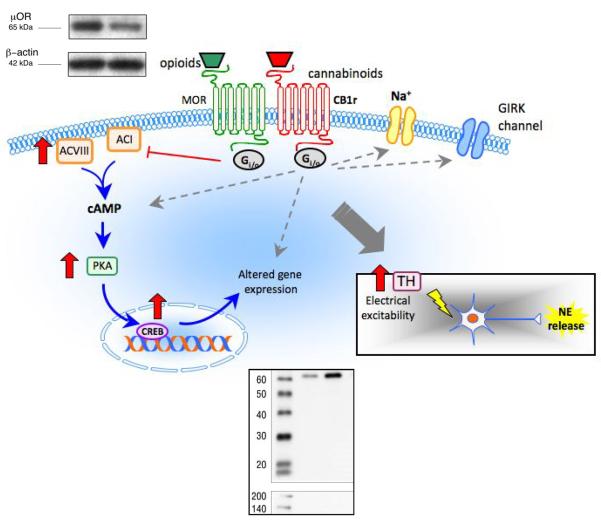Figure 1.
Schematic illustration depicting putative interactions between the cannabinoid and opioid systems in LC neurons (see text for details). Using a combination of behavioral, biochemical and neurochemical approaches, chronic cannabinoid administration has been shown to increase multiple indices of noradrenergic activity, including increases in tyrosine hydroxylase (TH) expression in the LC (Western blot, bottom right). In contrast, chronic administration of a CB1r agonist decreases MOR expression in the LC (Western blot, top left). Opioid and cannabinoid receptors mediate common signaling pathways central to clinical issues of tolerance, dependence and addiction. The interaction of these receptor systems is supported by findings of cross-tolerance, mutual potentiation, and receptor cross-talk. Downstream effectors of CB1r modulation could lead to altered neuronal excitability and to alterations in opioid receptor signaling that are central to the etiology of anxiety, stress–related dysfunction and the management of pain.

